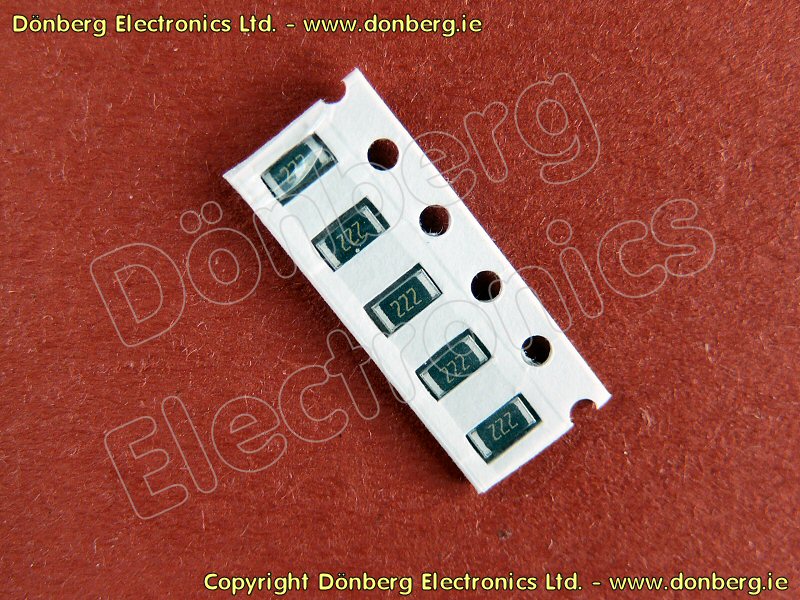1k resistor color: Brown Black Black...(5 band) , 1.02k
Resistor Color Code The values of resistors are determined by color band marked on the resistor body. The color code marking system has been adopted by the Electronics Industries Association (EIA) and the United States Armed Forces and recognized throughout the world. 4 Band Colour Code: Colour Code: Brown, Black, Blue, Gold. Tolerance: Gold Band ±5%: Related Articles. Resistor Colour Code Standard Resistor Values Ohm’s Law.
Our Resistor Color Code Calculator is a handy tool for reading carbon-composition resistors whether it's a 4-band, 5-band or 6-band type. To use this tool, simply click on a particular color and number and watch how the actual bands on the resistor illustration change. The resistance value is displayed on the field below together with the. Use the Resistor Color Code Chart (below) to understand how to use the color code system. When looking at the chart, note the illustration of three round resistors with numerous color code bands. The first resistor in the chart (with 4 bands) tells you the minimum information you can learn from a resistor. The next (a 5-band code) provides a. Resistor Color Code Calculator; Resistor Color Code Calculator. This resistor color code calculator is designed to find the resistance and tolerance values of through hole resistors. Resistor Color Code Calculator Resistor Color Code Chart. It appears you have JavaScript disabled within your browser. Functions on this page will not work.
1k05 , 1k07
1k1 5 band colors , 1.13k
1k15 , 1k18
1k21 , 1k24
1k27 , 1k3
4.7k Resistor Color Code
1k33k resistor color: Brown, Orange...(5 band) , 1k37

1k4 , 1k43
1k47k resistor color: Brown, Yellow...(5 band) , 1k5resistor color code (5 band): Brown Green Black...
1k54 , 1k58
1k62 , 1k65
1k69k resistor color: Brown, Blue...(5 band)marking, 1k74
1k78 , 1k82
1k87 , 1k91
1k96 , 2 kcalculate color code
2.05k , 2.1kband colors
2.15k , 2.21k
2.26k , 2.32k
2.37k , 2.43k
2.49k resistor color: Red, Yellow...(5 band)resistor color code, 2.55k
2.61k , 2.67k
2.74k , 2.8k

2.87k , 2.94k
3.01k resistor color: Orange, Black...(5 band)resistor color code, 3.09k
3.16k , 3.24k
3.32k , 3.4k
3.48k , 3.57k
3.65k , 3.74kmarking
3.83k , 4.02 k color code: YBRedBB (5 band)
4.12k , 4.22k
4.32k , 4.42k
4.53k , 4.64k

4.75k , 4.87k
4.99kmarking, 5.11kresistor color code
5.23k , 5.36k
5.49k , 5.62k
5.76k , 5.90k
6.04k color code: blue brown yellow... (5 band) , 6.19k
6.34k , 6.49k
6.65k , 6.81k
6.98k , 7.15kmarking
Resistor Color Code 2
7.32kresistor color code, 7.5 k
7.68k , 7.87k
8.06k , 8.25k
8.45kresistor color code, 8.66k
8.87k , 9.09k
9.31k , 9.53kmarking
1k Resistor Color Code
Resistor Color Code
Resistors are measured in ohms. Color 'bands' are used to specify each band. There are three bands and sometimes four. The fourth band is the tolerance (Gold or Silver) if there is no band the tolerance is 20%.
The first three bands are colored:
Black = 0 Brown = 1 Red = 2 Orange = 3 Yellow = 4
Green = 5 Blue = 6 Violet = 7Gray = 8White = 9
The fourth band (if any) is colored:
Gold = 5%, Silver = 10%, (NONE = 20%)
To use this calculator simply select the color for each band from the drop down menus. Click 'display value' for the result. To re-calculate, simply re-select any one of the drop down color bands, and continue...
The color bands one and two are NUMBERSBLACK = 0, BROWN = 1 etc. (see colors above). EXAMPLE: BROWN, BLACK would be 10, while BLACK, BROWN is 1 (drop the 0). The third band is a (X) multiplier of the first 2 bands; Black = 1, Brown = 10, Red = 100, Orange = 10K, Yellow = 100K, Green = 1M, Blue = 10M. EXAMPLE: Brown, Black, Blue = 10M Ohms. NOTE: The Black band is not used above 9 Ohms, Brown is the first band for all resistors with a value for 10 - 100 - 1000, 10,000 etc. EXAMPLE: Brown, Black, Red = 1000 Ohms not Black, Brown, Orange as this calculator will display as 1000 Ohms.
The fourth band is a TOLERANCE band. There are only two possible bands here: Silver (10%) and Gold (5%) if there is no band the resistor is 20% tolerance. EXAMPLE: A 1000 Ohm resistor with a 20% tolerance could be an 900 Ohm or 1100 Ohm value and still be within TOLERANCE. NOTE: Silver is most common in modern supply as we know it. NOTE: Some Japanese resistors have shown a band of Black (20%) or a band of White (2%). However these are rare and this calculator does not share the values.
Resistor Color Code Mnemonic
RLC IN PARALLEL